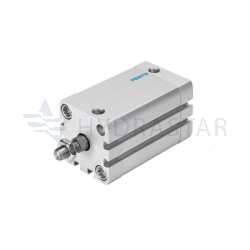There has been a drive towards automating machines and tasks wherever possible in the industrial and manufacturing worlds. This has led to the introduction of ‘smart’ pneumatic systems that use compressed air to control devices and machinery. Read on as we explore how these systems are revolutionising robotics and machine automation, making processes faster, more accurate and easier to manage.
Advanced Artificial Intelligence (AI)
Artificial intelligence has become an increasingly important catch phrase in the past decade. This is particularly true in the engineering and manufacturing industries, where machines have replaced many manual tasks. One application of AI that we’re seeing more of in manufacturing is so-called pneumatic robotics – an automation system that uses air pressure to control devices and machinery.
These pneumatic systems play an essential role in industrial processes such as cutting, shaping, drilling or stamping sheet metal parts into their final shape before assembly begins on larger products like cars or planes. Combining pneumatics with automated machine-controlled sensors or cameras can create a new level of control over machining processes, enabling more precise positioning and movement.
The Bionic Mobile Assistant Prototype
Bionic Mobile Assistant Prototype is a robot designed to work alongside humans in factories. It uses pneumatic actuators for its arms and grippers, controlled remotely by a human operator via Wi-Fi or even voice commands. The operator may be sited in another part of the building or even working from home, enabling great flexibility over shift patterns and production line management.
This type of automation was recently introduced into the aerospace industry by Boeing during the pandemic, in which remotely operated robots replaced human workers on certain tasks like riveting wings together before they’re sent offsite where an aircraft will be assembled. These robotic systems depend on extremely precise and responsive pneumatic systems – capable of making fast precision adjustments without any ‘lag’ between operator command and implementation on the production line.
Electric Arms
Interestingly, ‘smart’ pneumatics are also being used in agricultural and distribution centres. Electric arms have been introduced to carry out certain tasks such as moving boxes or pallets around the workplace in these industries. The arms can be fitted with a range of feedback-sensitive pneumatic tools that help automate picking and placing products. This has led to an increase in efficiency and accuracy as well as reduced the amount of time taken to complete logistics and warehousing tasks.
Contact Hydrastar Today
Pneumatic systems are a crucial component of the future of robotics and machine automation. Contact us today if you want help designing or implementing an automated pneumatic system that can handle your current production demands without hurting your bottom line.



